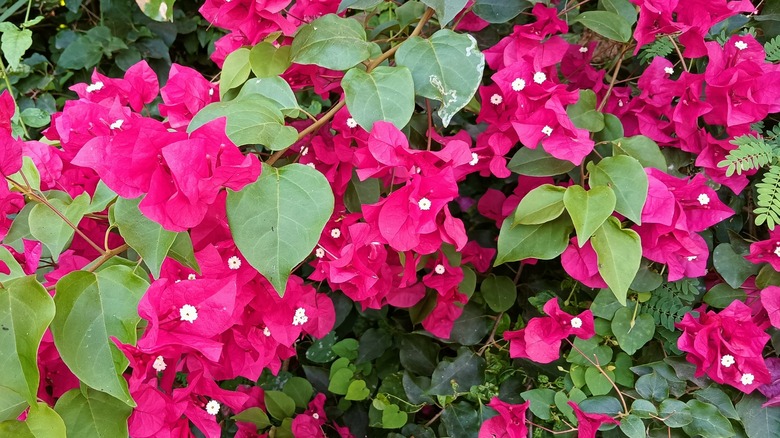Garden Trees, Shrubs & Vines
Michael Alexander Uccello
Bougainvillea, often called the “paper flower,” is renowned for its bright, showy blooms that add a touch of tropical flair to gardens worldwide. These plants, native to South America, are a favorite among gardeners and homeowners for their cascading waterfalls of vibrant flowers. However, it’s not uncommon for these plants to sometimes have periods when they don’t flower as expected. So, what might be the main reason behind a bougainvillea’s reluctance to bloom?
One of the primary reasons for this can be the soil composition. Bougainvillea flourish in well-draining soil. It’s essential to ensure that the soil doesn’t retain excessive moisture, which can lead to root rot. By incorporating coarse river sand, drainage can be substantially improved. Measure the pH of your soil and tweak it to be slightly acidic (around 5.5 to 6.0); this will create a more beneficial environment for these plants.
Interestingly, the size of the pot in which the bougainvillea is planted also plays a significant role. These plants often thrive when their roots are restricted in smaller pots. However, once the roots start to peek out from the pot’s bottom, it’s a signal to move the plant into a container at least one size larger and with ample drainage holes. Another crucial factor for the blooming of bougainvillea is sunlight. For optimal flowering, these plants need at least six hours of direct sunlight daily. When kept indoors or if deprived of adequate light, bougainvillea tend to prioritize vegetative growth, resulting in few or no flowers.
Take control of your bougainvillea

Asha SolankiAsha/Shutterstock
If you haven’t noticed, bougainvillea can be quite temperamental; the less you do, the better. For example, the watering habits can make or break the flowering process. While bougainvillea need water, overwatering can be detrimental, suppressing flower production. A good rule of thumb is to water only when the top 3 inches of soil are dry. After the blooming phase, cutting back all flower spikes and pruning the branches a few inches is beneficial, especially in late winter or early spring. This encourages new growth and paves the way for the next round of flowering.
The same goes for nutrition, which is essential for any plant; bougainvillea are no exception. However, moderation is vital. Overfeeding, particularly with nitrogen-rich fertilizers, can result in lush foliage at the expense of blooms. A more balanced approach would be to feed the plant every three weeks with a potassium-rich fertilizer. If all else fails, a little stress can sometimes coax bougainvillea into blooming. Trick the plant into survival mode by withholding water for a few weeks and then watering heavily. This often results in the plant producing more blooms, a natural mechanism to ensure its survival and reproduction.
While the charming bougainvillea may occasionally test a gardener’s patience with its blooming whims, understanding its needs and preferences can ensure that it remains a centerpiece in any garden. With the right conditions and care, this tropical beauty will generously reward you with dazzling blooms.